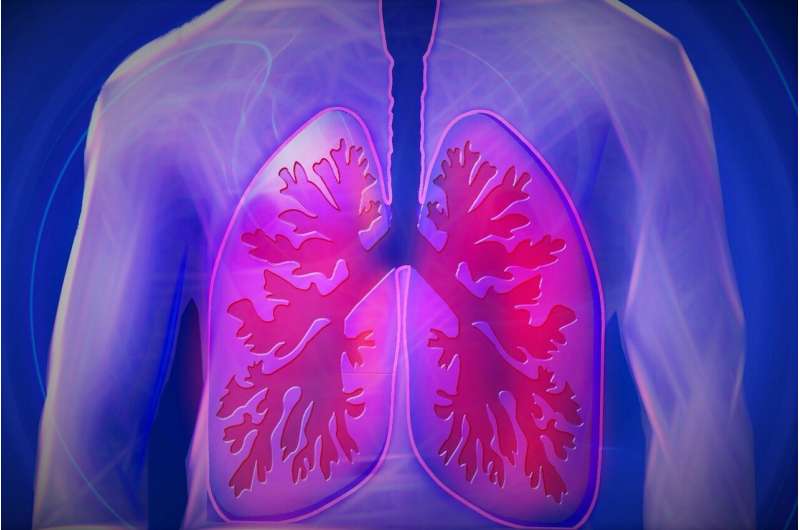Single-cell map of early stage lung cancer and normal lung sheds light on tumor development, new therapeutic targets

Researchers at The University of Texas MD Anderson Cancer Center have developed a first-of-its-kind spatial atlas of early-stage lung cancer and surrounding normal lung tissue at single-cell resolution, providing a valuable resource for studying tumor development and identifying new therapeutic targets. The study was published today in Cancer Discovery, a journal of the American Association for Cancer Research.
The findings reveal a heterogeneous lung cancer ecosystem, with extensive interactions between cancer cells and the surrounding microenvironment that regulate early cancer development. By studying the crosstalk between the tumor and surrounding immune cells, researchers identified and validated CD24, an immune checkpoint protein, as a new immunotherapy target for lung cancer treatment.
"Our study is the first to look at this through spatial mapping of multi-region normal tissues and the tumor itself at the single-cell level," said co-senior author Humam Kadara, Ph.D., associate professor of Translational Molecular Pathology. "This work provides new insights into how lung adenocarcinomas evolve from a particular region in the lung and already has pointed us to a promising new therapeutic target in CD24."
Through this work, the research team sought to gain a better understanding of how and why lung tumors develop in a particular region of the lung versus another. This understanding offers opportunities not only to better treat early-stage cancers, but also to improve screening and prevention strategies.
The research was led by Ansam Sinjab, Ph.D., postdoctoral fellow in Translational Molecular Pathology, and Guangchun Han, Ph.D., postdoctoral fellow in Genomic Medicine. To construct this single-cell map, the multidisciplinary team performed single-cell RNA sequencing of 186,916 cells from five early-stage lung cancers and 14 normal lung tissue samples.
"This high-resolution spatial mapping generated a much more complete picture of lung cancer than was previously available, and we believe this will be a valuable resource to the research community," said co-senior author Linghua Wang, M.D., Ph.D., assistant professor of Genomic Medicine. "We now have a greater understanding of the tremendous heterogeneity of diverse cell populations within the tumor immune microenvironment and of the importance of tumor-microenvironment interactions in regulating cancer progression."
The analysis revealed significant heterogeneity within a given tumor and across multiple tumors. Further, while normal lung epithelial cells were distinct from the tumor cells, those closer to the tumor shared more similarities with the tumor cells compared to distant normal tissue. These signatures also were evident in precancerous lesions compared to normal lung tissue, suggesting the data may be useful in identifying markers for early detection or prevention.
Similar trends were observed when looking at immune cells. With increasing proximity to the tumor, the researchers observed a shift in immune cell composition and signals toward a pro-tumor, immunosuppressive environment. Interestingly, specific immune populations were present in samples from smokers that were absent in those from non-smokers.
By examining interactions between the tumor and immune microenvironment, the researchers discovered that CD24, highly expressed in lung cancer cells, is a pivotal point of interaction between cancer cells and immune cells. In independent cohorts of early-stage lung cancers, CD24 expression correlated with poor clinical outcomes and shortened survival. Further, blocking CD24 significantly reduced the growth of lung cancers in animal models.
Going forward, the researchers will continue experiments to identify the best strategy for targeting CD24 therapeutically, with the goal of performing future clinical studies to evaluate new treatment strategies for patients with early-stage lung cancer.
The research team continues to analyze additional patient samples to expand the data resource, taking a deeper dive to understand how immune cell populations change dynamically during early lung cancer development. The researchers also plan to look more closely at how different cancer drivers, such as smoking or genetic mutations, influence the tumor immune microenvironment and its role in the evolution of early-stage lung cancer.



















